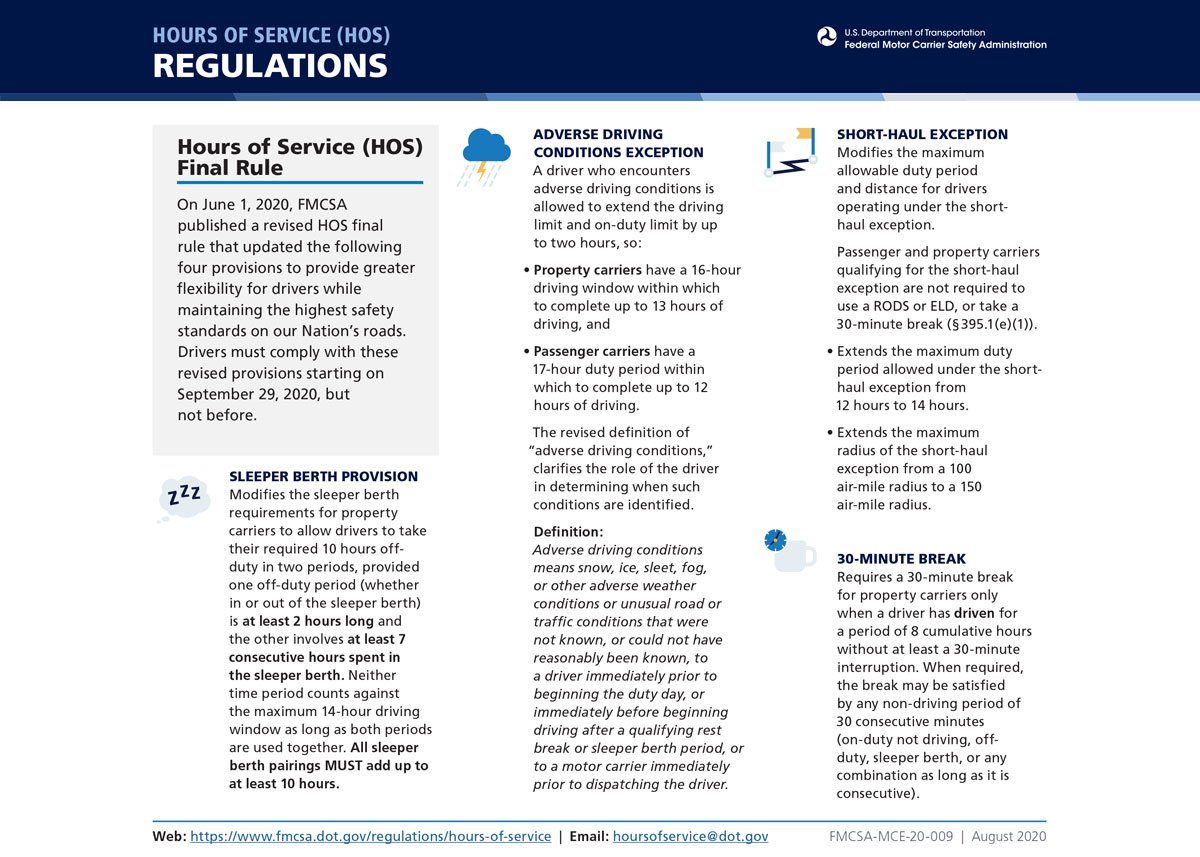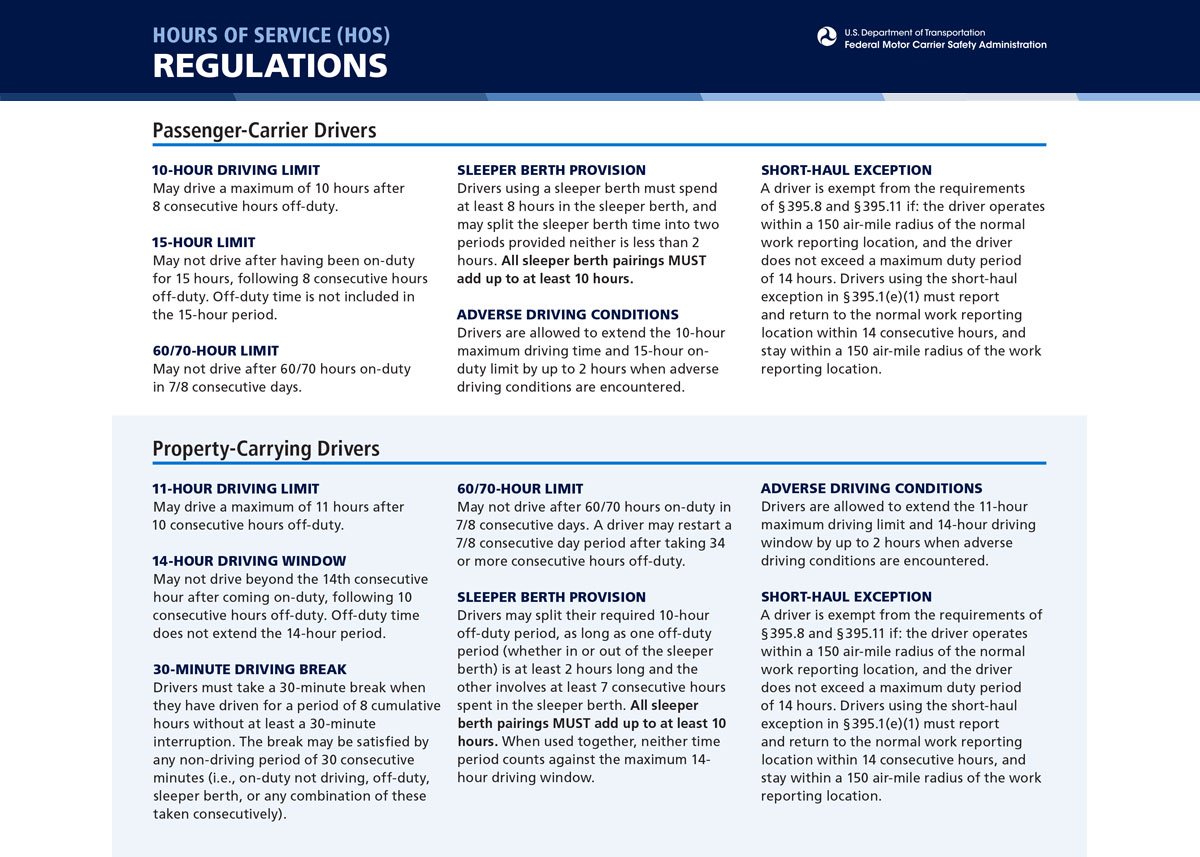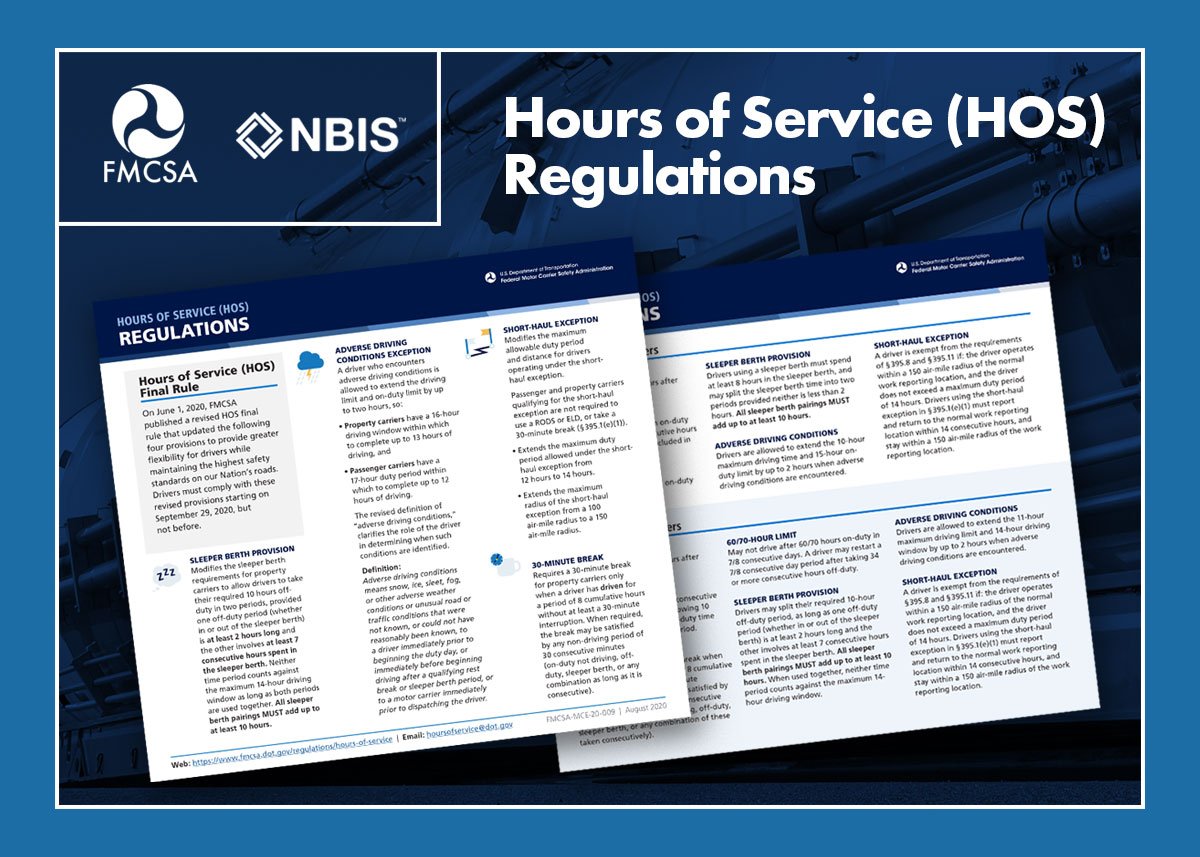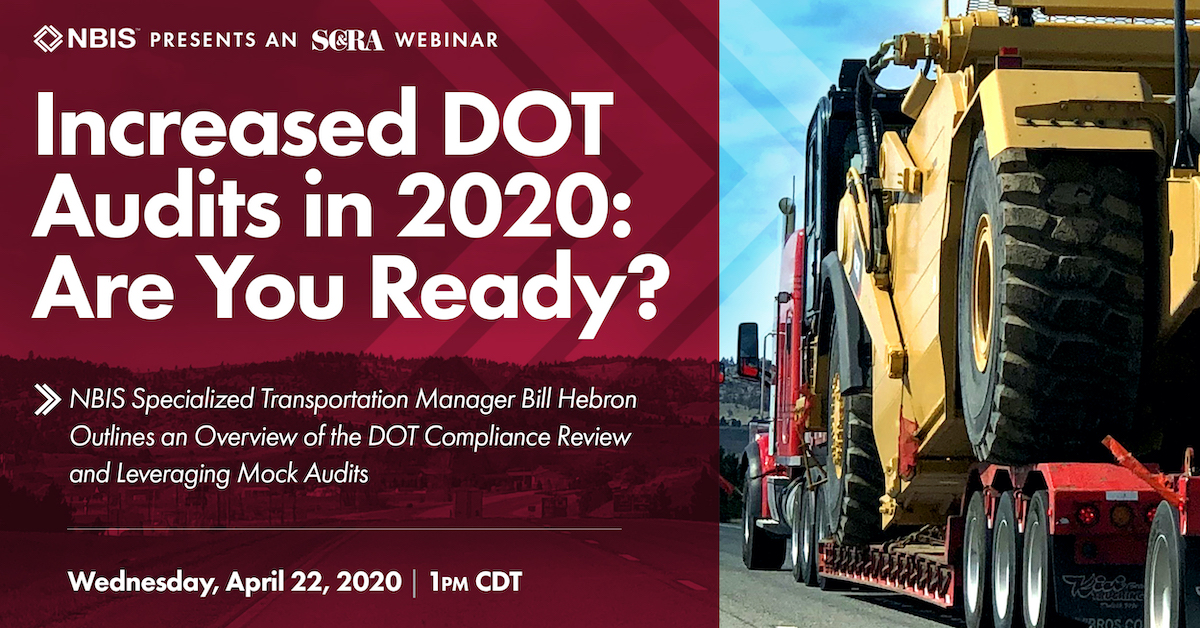On September 29th, the Federal Motor Carrier Safety Administration (FMCSA)’s new Hours of Service (HOS) Regulations go into effect. The FMCSA published the finalized HOS rule on June 1st, including major revisions to the regulations.
These changes could have a significant impact on your company’s operations. Here are some of the biggest changes, and how they might affect procedure:
Sleeper Birth Provision
Property carrier drivers can split their required ten hours off-duty into two periods, as long as they spend a minimum of two hours for one period, and a minimum of seven hours spent in their sleeper berth for the other.
Adverse Driving Conditions Exception
Drivers facing adverse driving conditions can extend driving and on-duty limits by up to two hours. The extended time limits are as follows:
- Property carriers: 16-hour driving window; up to 13 hours of driving
- Passenger carriers: 17-hour duty period; up to 14 hours of driving
30-Minute Break
Property carriers are required to take a 30-minute break when a driver has driven eight cumulative hours without a 30-minute interruption.
Short Haul Exemptions
The DOT has extended the short-haul exemption for maintaining a record of duty status radius to a distance of 150 air miles and a duty period of 14 hours.
If your drivers are working under those thresholds, they may be exempt from maintaining a driver’s daily log. This means your company may also be exempt from using electronic logging devices.
The exemption provides a fantastic opportunity for your company to transition its technology expenses from electronic logging to risk management technologies such as dash-cam packages. Dash-cam packages have proven to enhance driver safety and provide insight into critical safety events. Packages such as NBIS’ FalconEye Camera Discount Program serve as cost-effective ways to protect drivers, reduce risk, and reduce false claims.


The Hours of Service Regulation as provided by the Department of Transportation’s Federal Motor Carrier Safety Administration can be viewed above or are found in full here.
For more information on NBIS’ FalconEye Camera Discount Program, visit this page.







